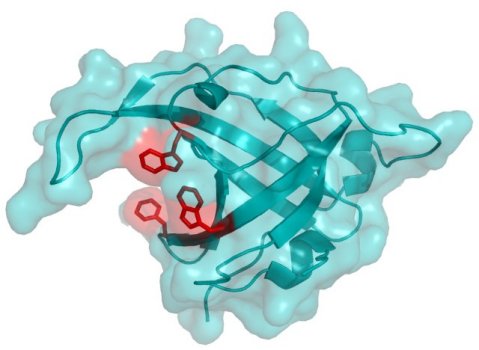New discovery linked to DNA repair and cancer

Scientists have discovered a new protein in humans that plays an important role in repairing DNA damage that could lead to cancer.
Professor Malcolm White of the University of St Andrews led the discovery alongside an international team from the Queensland Institute for Medical Research in Brisbane, Australia.
Professor White and Dr Kum Kum Khanna in Brisbane discovered the protein, named hSSB1, when searching the human genome for ancient classes of proteins. They found a small gene, which had previously gone unnoticed, encoding a novel DNA binding protein that bore a strong resemblance to proteins from a group of microbes called Archaea.
The human hSSB1 gene was cloned and the protein analysed. hSSB1 binds to the single stranded form of the genetic material DNA, which is formed when DNA is damaged in the cell. The protein is thought to work by signalling to other proteins that damage has occurred, leading to important cellular responses. Cells deficient in hSSB1 become hypersensitive to DNA damage and die rapidly.
“When we discovered this gene we thought it might be important for DNA repair and genome stability, but we were amazed by just how important it seems to be,” said Professor White, of the Centre for Biomolecular Sciences at St Andrews. “We identified the gene as a direct result of some basic research on DNA repair in micro-organisms. This emphasises the importance of supporting fundamental research.”
Dr Derek Richard, formerly of St Andrews and now a researcher at the QIMR, added “The next challenge is to find out how it signals that DNA is damaged, and determine if it plays a role in the development of cancer or in patients’ responses to chemotherapy and radiotherapy.”
The work in St Andrews was funded by the Biotechnology and Biological Sciences Research Council (BBSRC). The study is reported online by Nature.
ENDS
NOTE TO EDITORS
PROFESSOR MALCOLM WHITE IS AVAILABLE FOR INTERVIEW TODAY (THURSDAY), TEL: 01334 463432, EMAIL [email protected]
DNA damage and cancer
The genetic material DNA suffers constant damage from a wide variety of cellular and environmental factors, and must be repaired efficiently to ensure that DNA damage is removed. If repair is not completed, damage can result in mutation, leading to cell death or cancer. Most DNA damage is unavoidable and is caused by simple chemical reactions in cells. Other causes, such as UV radiation or exposure to toxic chemicals (for example in cigarette smoke) are avoidable to a greater or lesser extent.
DNA repair and single stranded DNA binding proteins
There are many different pathways of DNA repair in all organisms including humans. Protein machines constantly scan the genetic material and detect damage, initiating repair reactions. These deal efficiently with the vast majority of the different DNA damage events that occur every day. Only very infrequently does DNA damage go unrepaired and cause mutation.
There are a variety of DNA damage signalling proteins. The best known in humans is Replication Protein A (RPA). RPA binds single stranded DNA, which is frequently generated during DNA damage, and signals to other proteins to initiate a cascade of reactions that can result in the inhibition of cell growth and division, giving time for DNA repair to take place. If the DNA damage is to severe, cells can be forced to kill themselves, protecting the body against tumour formation.
RPA is a large complex protein, but its basic structure is conserved in all forms of life from microbes to humans. These proteins are collectively called SSBs, for single stranded DNA binding proteins. The new human protein hSSB1 was discovered by scanning the human genome sequence for proteins that resemble the simpler versions of SSBs found in microbes called Archaea.
Archaea
These are an ancient family of microbes often found in extreme environments such as volcanic pools. They are quite different from bacteria such as E. coli, and bear a much closer resemblance to eukaryotes (including humans) in the way they make, read and repair DNA.
NOTE TO PICTURE EDITORS
IMAGES ARE AVAILABLE FROM THE PRESS OFFICE – CONTACTS BELOW.
Issued by the Press Office, University of St Andrews
Contact Gayle Cook, Press Officer on 01334 467227 / 462529, mobile 07900 050 103, or email [email protected]
Ref: DNA repair 010508
View the latest University press releases at www.st-andrews.ac.uk
Category Research